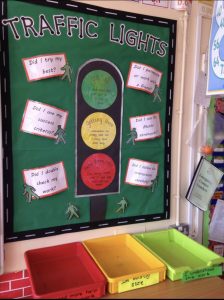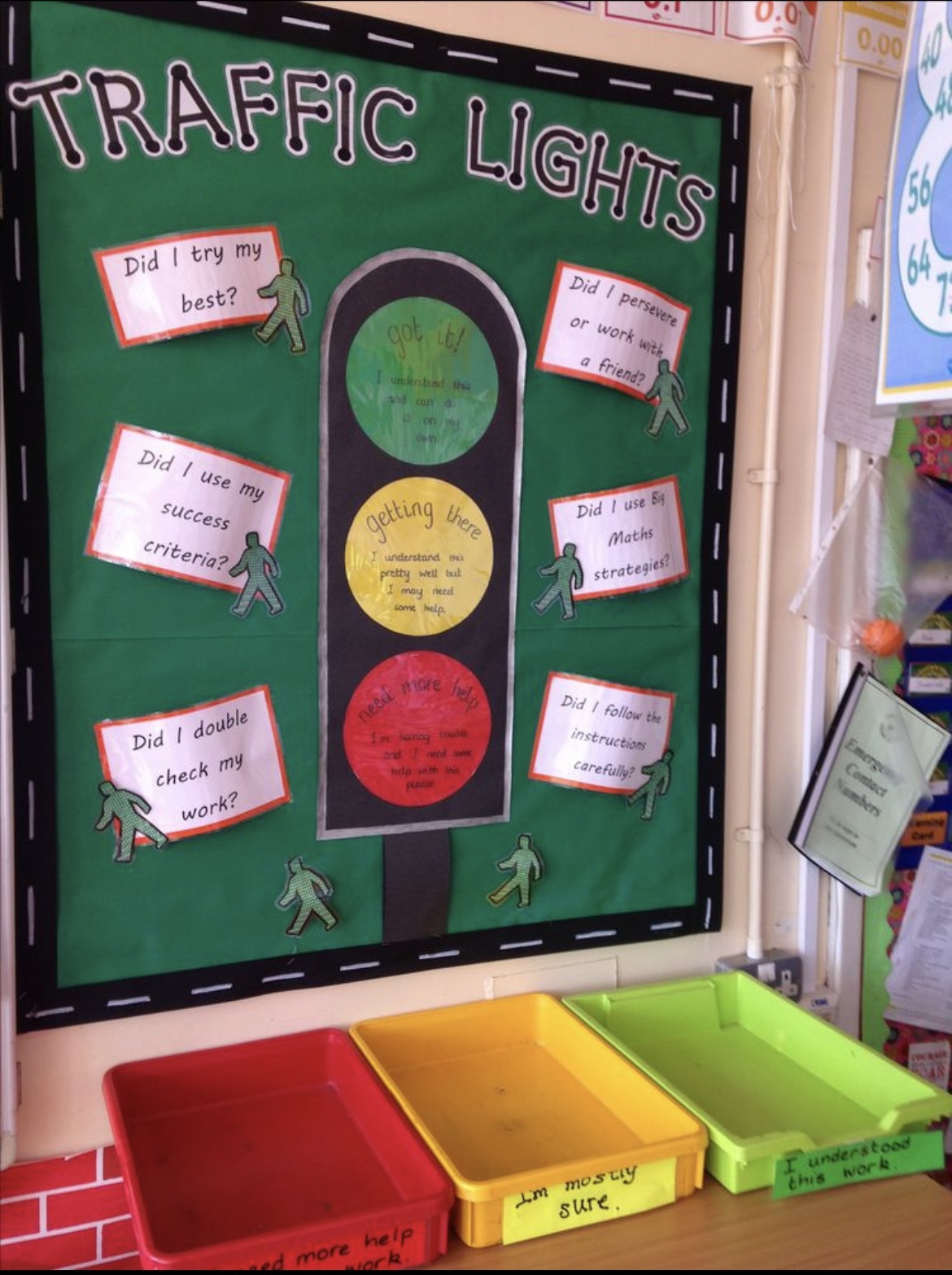Student Contributor: A. Luna
 This tool helps students and the teacher understand a student’s level of thinking and understanding of the assignment. With this, students can feel safe telling the teacher their understanding indirectly and without contact.
This tool helps students and the teacher understand a student’s level of thinking and understanding of the assignment. With this, students can feel safe telling the teacher their understanding indirectly and without contact.
For this tool, you will need three bins where students can put their work in after lessons. One bin has to be red. In this bin, students will put their work in here if they need more help in understanding. Another bin has to be yellow. In this bin, students will put their work in there if they need help in understanding a bit more; “nearly sure.” Lastly, you need a green bin where students will put their work in if they completely understand the work. An important element for this tool is that students need to read targets posted on the board and see where their understanding stands in order for them to determine where they should put their work in.
This tool fits best in the Supportive Phase because it will let a teacher better assess the student. By letting the student choose where their understanding is at, on their own, the teacher is able to make adjustments to future lessons, bring back students for individual or small group work, and even being able to talk to the student directly about what they do understand and go from there. For my Theory of Influence, I thought that this tool fits best under Student Directed and Collaborative because students get to decide how well they understood the work and the teacher is able to do further adjustments based on the students' decision.
More Information –
Tool Source: Pintrest



I have a combined classroom of 11 students which is made up of 3 second graders, 3 third graders, and 5 fourth graders. I am placed in an extremely rural town, if you would call it that, an hour away from EWU. The area is more of a large neighborhood, and the nearby town itself where mostly everyone lives and works is just 10 minutes away. I decided to try this strategy because I have a few students in my class who like to rush through their work. I know and they know that they can do so much better than what they produce so I thought this strategy would be a fun and interactive way of asking them to try again and make their product stronger. So far it’s working and it’s been super helpful to use as a reference so that feedback doesn’t come off as a personal attack. It’s more of a path of learning and growth. I also feel like this strategy can be used for other things such as emotions. It can help students explain how they feel so that we can find a solution or an agreement and move forward.